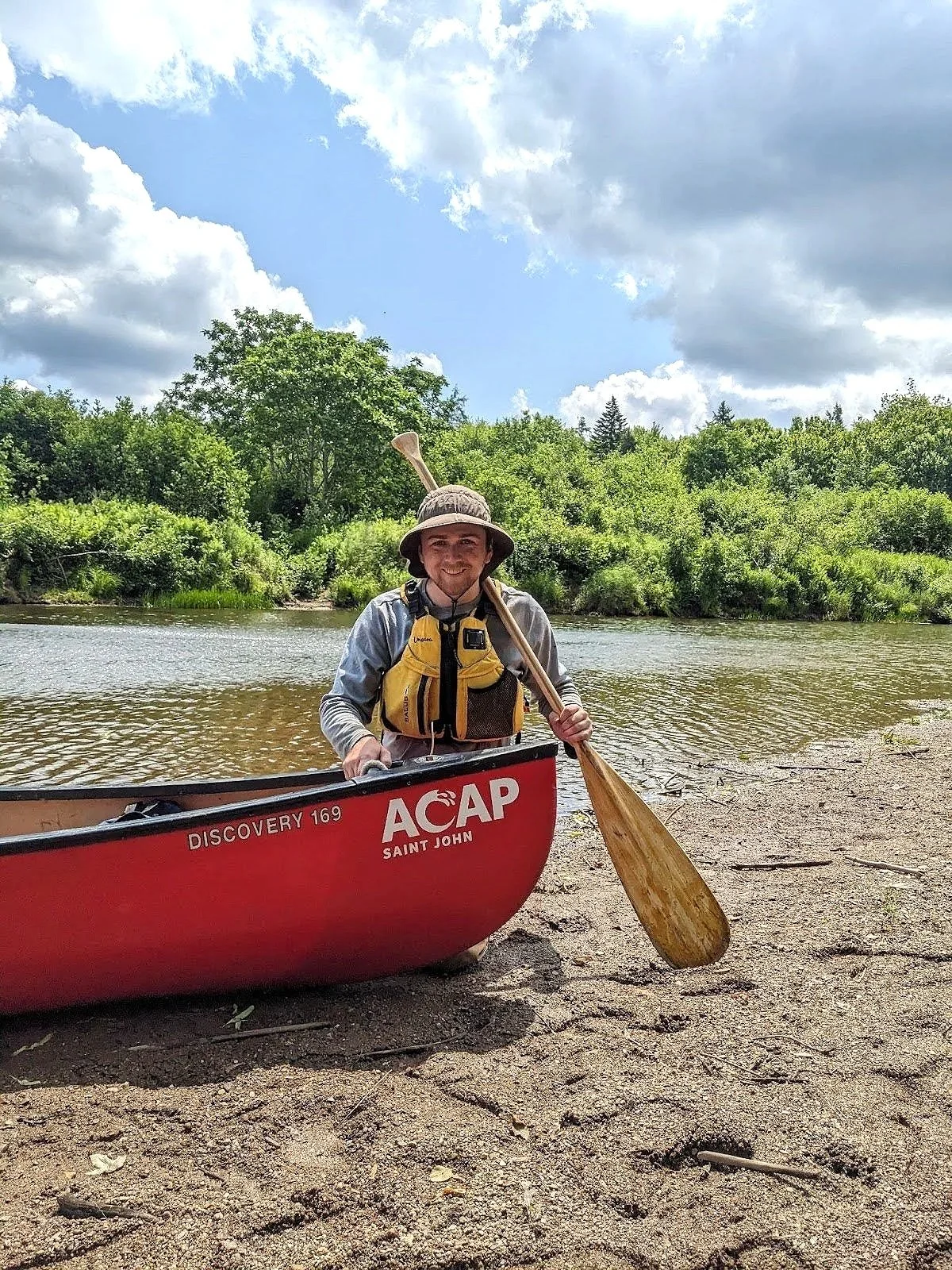A Landscaper in a Restoration World
Ian Logan, 2025 Summer Student
I have always been interested in the environment, sustainability, and restoration. From a young age, I have enjoyed being outside, exploring forests, water, and every landscape in between. In my younger years, I spent my summers landscaping, as that is all I knew of outdoor careers. During my undergrad in landscape architecture, I saw restoration for the first time as a career; deciding then that I wanted to work to help mitigate and adapt our water-adjacent landscapes to the harms of climate change, through stormwater management and erosion control.
To continue my education and further my knowledge in restoration, I was accepted into the Masters of Resource and Environmental Management program at Dalhousie University. In doing so, I realized I needed field work to accompany my application. This brought me to ACAP SJ, where I have been working my way through the summer, learning and building experiences that I will take with me into my career.
Nothing could have prepared me for how amazing this summer has truly been. Getting to be outdoors, participating in a wide range of experiences; some of which I understood immediately and others totally new to me. As I entered the job with an educational background in landscape architecture, my existing knowledge base extensively prepared me for restoration and green infrastructure work, but it did not prepare me for the fishing, water quality, or outreach.
I took an immediate interest in the restoration and green infrastructure experiences. As I intend on a career in restoration, I felt the most prepared for it, and green infrastructure was second nature as it was a significant part of my landscape architecture education.
Throughout the summer, the restoration experiences brought me to a variety of parks, private residences, and forested areas (before the woods ban), to complete tasks like tree planting, tree health assessments, erosion control, sedimentation control, and stream assessments. The experiences I had with restoration mainly gave me a better base to build an understanding of erosion control. Most of these were by vehicle access, but others were via canoe, which is one of my favorite summertime recreational activities.
The green infrastructure experiences included building rain gardens at schools like Seaside Park Elementary and The Woods, doing computer work designing a rain barrel system, and completing thermal imaging drone surveys for heat island studies. With my landscape architecture experience, I was able to assist in plant recommendations and some basic design suggestions. These experiences gave me the practical hands-on know-how for managing stormwater.
Utilizing my knowledge and comprehension of restoration and trees, I participated in a restoration-based outreach event for summer camp kids at Rockwood Park. It was a rewarding experience teaching the kids about what they can do to help restore our ecosystems, how to prevent erosion, and all the beautiful native trees that can be found in our forests. At the end of the event, some of the kids said they had learned a lot and would seek out more about trees in their future. Making an impact on the next generation of environmental stewards was by far one of the most enriching parts of the summer.
My past experiences never taught me anything about fish monitoring or water quality monitoring; those were two very new areas of learning for me at the beginning of the summer. The big eye-opening event for how under-prepared I was, yet excited I would become at the beginning of the summer, was catching a sturgeon in a fyke net just off of Lorneville. As the summer progressed, these experiences became second nature; I began to understand all the acronyms, identify fish without an ID guide, and began to self-relate all the information I was taking in, with how it related to restoration. Every aspect of my time with ACAP SJ has been valuable in my pursuit of restoration experience, as fishing and water quality showed me that they can play their own roles in bringing a watercourse and its surrounding area back to a healthy and thriving environment, through historical and ongoing data analysis. As I look back on it all, the challenges I faced in learning these parts of the job, and how I overcame them, will stick with me well into my career.
Working at ACAP SJ has given me a significant amount of hands-on experience that I would never have gained in the classroom, prior to this point. I believe one never stops learning, and I will take all the experiences I had at ACAP SJ into my Masters and career, as a new base of knowledge to continue building upon.



